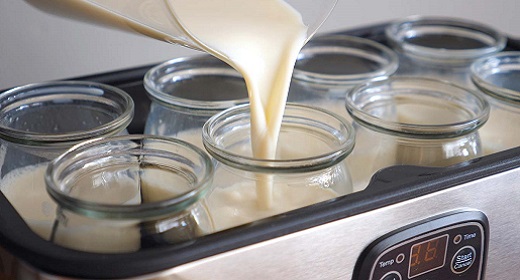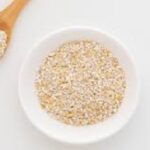by Ocean Robbins : Sometime in humanity’s ancient past, someone figured out that they could carry milk in pouches made from animal bladders and skins…
We are proud to announce a new partnership with John and Ocean Robbins and the Food Revolution to bring our readers Summits, Seminars and Masterclasses on health, nutrition and Earth-Conscious living
Sign up today for Plant Powered and Thriving
And in some really hot places, like the deserts of the Middle East, the combination of milk, heat, and bacteria produced a chemical reaction called fermentation. And the particular bacteria involved turned the milk into yogurt.
Today, yogurt is frequently included in blog articles with titles like “10 Superfoods to Boost a Healthy Diet,” thanks to its high concentration of vitamins, calcium, and protein. But yogurt’s real claim to fame, healthwise, is its probiotic content. Brimming with billions of beneficial bacteria (dang, that’s good alliteration!), yogurt can support your gut microbiome in all sorts of positive ways.
Epidemiological studies have found that people who eat yogurt tend to have a lower risk of type 2 diabetes, heart disease, and obesity. And it’s widely believed that yogurt nurtures good bacteria in your gut, which in turn reduces inflammation and improves the effectiveness of your body’s natural insulin.
Now, before you rush out to stock up on Dannon Fruit on the Bottom packs, let’s remember: dairy products like yogurt come from lactating animals (mostly cows). And the vast majority of meat and dairy are sourced from factory farms, which contribute to climate change, deforestation, animal cruelty, pollution, and chronic and infectious diseases.
Even from a purely health perspective, most commercial yogurts are problematic. They’re heavily sweetened, rendering them more of a sugary dessert than a health food. And they contain large amounts of saturated fat, which is linked to many chronic conditions, including heart disease and stroke.
Fortunately, you can get the benefits of yogurt without these downsides. Many companies are now making dairy-free yogurts, full of many of the same nutrients and active cultures found in dairy yogurt. Some are sugar-free or low in sugar. And for total quality control, cost savings, and the freshest taste, you can make your own yogurt at home, which is probably a lot easier than you imagine.
In this article, we’re going to look at the types of dairy-free yogurt, how to make your own, and a few delicious recipes to get you started.
Types of Plant-Based Yogurts
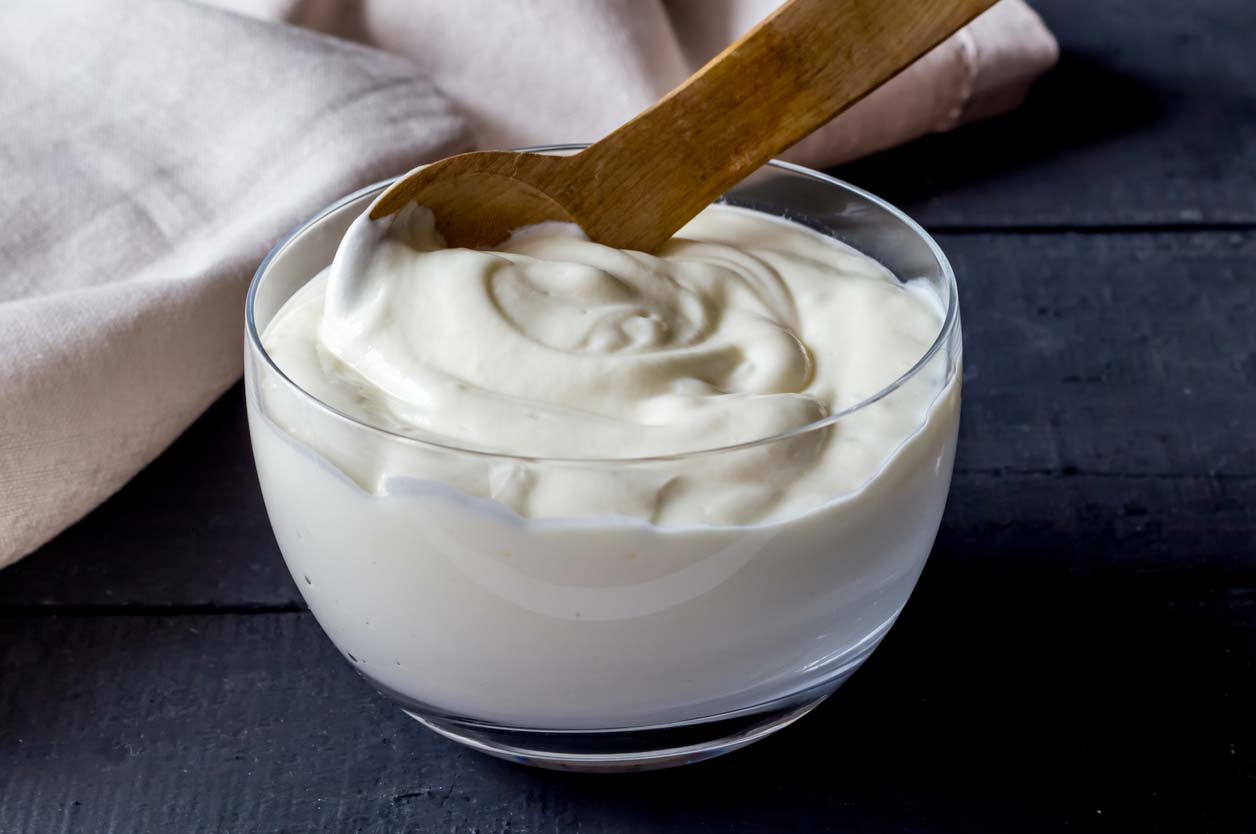
You can make plant-based yogurt out of nuts, seeds, legumes, and even whole grains like oats and other cereals. The most common ones you’ll find at the grocery store include the following:
Soy Yogurt
Soy yogurt has a protein profile similar to cow’s milk, and has the added advantage of swapping out saturated fat for healthier unsaturated fats. Contrary to the hype and manufactured controversy, soy is a healthy food for most people. But watch out for added thickeners and emulsifiers, and choose organic to avoid GMOs.
Almond Yogurt
Almond yogurt is a good source of healthy fats and is typically lower in sugar than other commercial yogurts. But it’s not a good source of calcium unless fortified. However, the main issues with almonds are not health-related, but environmental; almond trees are water hogs. It takes over a gallon of water to produce a single almond, which comes out to about 84 gallons of water per gallon of almond milk. Before you ditch the almonds and return to cow’s milk, however, realize that a gallon of cow’s milk requires a staggering 880 gallons of water to produce. So while almond milk and almond yogurt are far from the most environmentally-friendly options, they’re still 10 times less water-wasteful than milk and yogurt from dairy.
Oat Yogurt
This relative newcomer is taking the plant-based yogurt world by storm, thanks to oats’ relatively low cost and pleasant taste, coupled with the marketing prowess of some popular brands like Oatly and Silk. Oats are good for our health in a myriad of ways. They can be good for the earth, too. Many farmers plant and harvest them early enough to follow with a nitrogen-rich cover crop that can replenish soil fertility. Oat yogurts can, however, contain additives like sugar, potato starch, oil, and flavorings. So if you decide to give one a try, read the label carefully and choose organic to avoid glyphosate residue.
Cashew Yogurt
Because cashews are naturally sweet and high in fat, they make a rich, creamy yogurt that doesn’t need many additives. On the other hand, cashew yogurt isn’t a great source of protein, and it lacks calcium as well (unless calcium is added through fortification). The ecological downside of cashews is their high water requirement, much like almonds. There’s also concern about underpayment and mistreatment of workers. Harvesting cashews can cause serious injury due to the toxic oil released during the shelling process. Look for organic and fair-trade certified options to support when possible.
Hemp Yogurt
Hemp seeds are really good for you, and (for better or worse) they don’t get you high like their botanical cousin, marijuana. They are a great source of fiber, which your gut bacteria loves, and they can help reduce the risk of heart disease and other chronic conditions. Hemp yogurt is a protein powerhouse, as well as a decent source of omega-3 fatty acids. Also, hemp yogurt doesn’t set like dairy varieties, so it does require a thickening agent like agar (made from seaweed).
Pea Protein Yogurt
As the name implies, this type of yogurt is high in protein. But unlike most of the other plant-based yogurts on this list, pea protein yogurt isn’t a whole food since the peas are highly processed. On the upside, peas are legumes, one of the foods most closely associated with health and longevity. One brand, Daiya, adds potato protein and coconut and fortifies their yogurt with calcium and vitamins to approximate the nutritional profile of dairy yogurt.
Coconut Yogurt
These yogurts are naturally low in sugar and high in antioxidants. They’re not great sources of protein, however, and many coconut yogurt brands include lots of additives for texture and taste. The CoYo brand is an exception, featuring coconuts, live cultures, and natural thickeners like tapioca and pectin. Although coconuts can be a healthy food, coconut yogurt is often made from coconut “milk” products that are high in saturated fat.
Ingredients to Look Out for in Plant-Based Yogurt

Some plant-based yogurts are essentially junk food. They’re highly processed, with good stuff like fiber removed, and bad stuff like white sugar and thickeners added. When you’re shopping for plant-based yogurt, look for those with organic certification, as they’re generally cleaner and less processed than non-organic varieties. But whatever you buy, check the ingredients list to minimize the following:
Sugar
You can find sugar both in the ingredients list and sometimes on the nutrition facts label of both dairy and dairy-free yogurts. But avoid plant-based yogurts with more than five grams of added sugar per serving. Also, watch out for added sugar by another name, such as agave, fructose, sucrose, and cane sugar.
Thickeners
Plant-based yogurts often add gums, emulsifiers, and other thickeners to approximate the natural texture of dairy yogurt. You know, the consistency where an inserted spoon sticks straight up out of the container. Some of these thickeners appear to be safe enough. For example, xanthan gum, guar gum, pectin, and plant-derived lecithin are common ones that don’t have a problematic rap sheet. But others like cellulose gum (carboxymethylcellulose), carrageenan, and polysorbate 80 may worsen digestive problems.
Additives
Dipotassium phosphate is a highly water-soluble salt that’s used in non-dairy creamers and some yogurts as a stabilizer to preserve a smooth and even consistency. Though well tolerated by most people, it can cause gastrointestinal problems in some. Another common yogurt additive is titanium dioxide, which is a mainstay of both the processed food and cosmetics industries. It’s “generally recognized as safe” by the US Food and Drug Administration, but since its sole purpose is to make food (and soap, and — wait for it — paint!) appear whiter, I don’t know anyone who’s going to call it a health food. Why ingest nano metals just to change the color of your food?
Natural Flavorings
This benign-sounding phrase can hide all manner of decidedly non-natural ingredients, including chemicals, carrier solvents, and preservatives. As long as it isn’t made from petroleum, there are few substances that, in small enough concentrations, can’t qualify as a “natural flavoring.” To find out more, read this article on everything you need to know about natural flavors.
GMOs
Finally, in order to avoid exposure to glyphosate and other potential chemicals, make sure your plant-based yogurt isn’t sourced from genetically modified plants. Chief among these is soy, but you might also be consuming genetically engineered canola or cottonseed oil. Make sure to go organic when possible, especially with soy yogurts. Organically grown foods are, by definition, non-GMO.
How to Make Your Own Plant-Based Yogurt

The best (and certainly the most affordable) way to enjoy healthy and delicious plant-based yogurt is to make your own. Not only can you avoid the problematic ingredients listed above, you can save money and produce yogurt to your taste and texture preferences. Since humans have been making yogurt, sometimes by accident, for thousands of years, you don’t need fancy or dedicated equipment, although a few gadgets can definitely make it easier. To make plant-based yogurt, you just need some non-dairy milk, an appropriate bacterial culture, and a way to keep it warm.
Even though it needs to be kept warm, technically, yogurt isn’t cooked; it’s incubated, which means it’s held at a constant warm temperature to encourage heat-happy, gut-friendly bacteria to be fruitful and multiply.
Depending on your base ingredient, you might also choose to use something to thicken your yogurt or add some flavor.
Yogurt-Making Supplies
If you want to commit to yogurt making, there are a few products that can make it easier and more convenient. For a classic yogurt-making machine, you can’t beat the Vitaclay 2-in-1 Organic Slow Cooker and Yogurt Maker. The eco-friendly clay pot insert ensures that no nasty chemicals or metals leach into your food. And its modest size is also great for single-serving, slow-cooked meals.
As I mentioned above, certain electric pressure cooker models include a yogurt setting. One of the most popular and least expensive is the Instant Pot Duo Mini 3-Quart 7-1 Multi-Use Programmable Pressure Cooker, Slow Cooker, Rice Cooker, Steamer, Sauté, Yogurt Maker, and Warmer. This is half the volume of the standard 6-quart Instant Pot, which is great for small batches of yogurt, but not large family meals.
But if you’re really serious about your yogurt, consider the Bear Yogurt Maker. Roughly the same price as the Mini Instant Pot, this yogurt maker has separate settings for classic and Greek yogurt, as well as dedicated programs for fermented wine and cheese (which I suspect you can use with plant-based cheese as well, but we haven’t tested this out).
5 Delicious Dairy-Free Yogurt Recipes
Making your own yogurt at home is great for several reasons. First, it’s cost-effective. Just one tablespoon of store-bought, plant-based yogurt or one probiotic capsule can inoculate 8-16 ounces of yogurt. Second, you save on plastic container waste! It’s no secret that one of the best ways to preserve the planet is through reducing waste — and what better way to do that than through DIY yogurt! Third, experimenting is So. Much. Fun. We’ve experimented lots, and admittedly, some yogurt recipes came out lovely while others, well, not so lovely. But don’t worry, we’re only sharing the loveliest of the lovely with you!
Start by making the Easy Homemade Cashew Yogurt or the Instant Pot Organic Soy Yogurt. From there, use them to create all kinds of yogurt-based recipes in your kitchen. To get you started, we’ve put together a few yogurt-centric recipes: Peaches and Cream Overnight Oats, Creamy Lemon Dijon Dressing, and Vegan Onion Dip. Now go have fun, and let us know about your yogurt-making experience!
1. Easy Homemade Cashew Yogurt
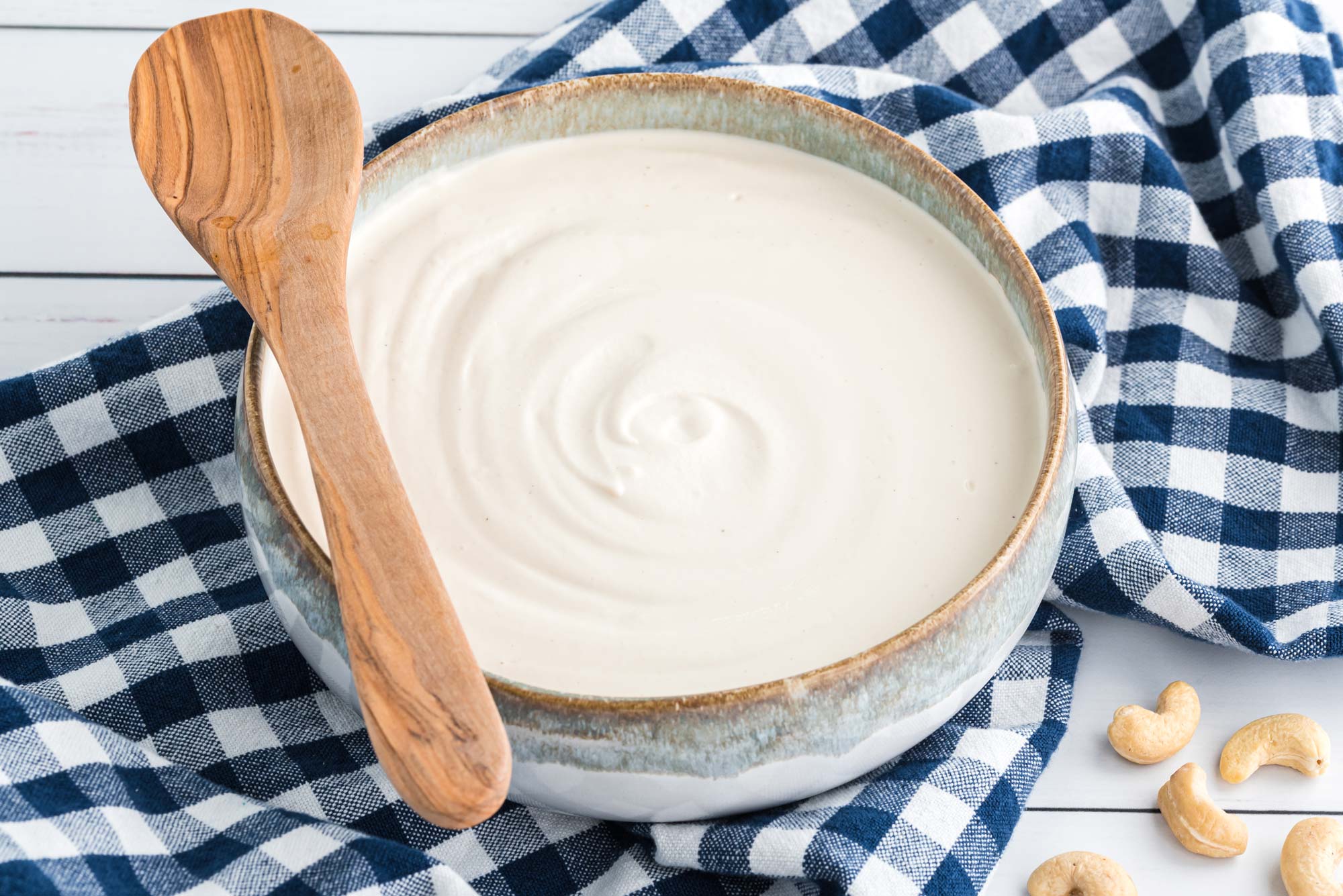
Are you into making magic? Because that’s what it feels like when you create this cashew yogurt! The process is pretty wonderful (as in wonder-full), and the final result is heavenly. And, since cashews have a decent amount of plant-based fat, they create that creamy mouthfeel that a lot of people are looking for from their yogurts (without needing any thickeners).
2. Instant Pot Organic Soy Yogurt

Looking for innovative ways to use that Instant Pot sitting on your counter? Making homemade yogurt in your Instant Pot is easy-peasy and tastes incredibly delicious. The tanginess you get from the Instant Pot will make your taste buds sing while your belly feels all the goodness from the healing probiotics. Have fun with this and experiment with a range of fermentation times, but we found that 13 hours created the perfect tang!
3. Peaches and Cream Overnight Oats
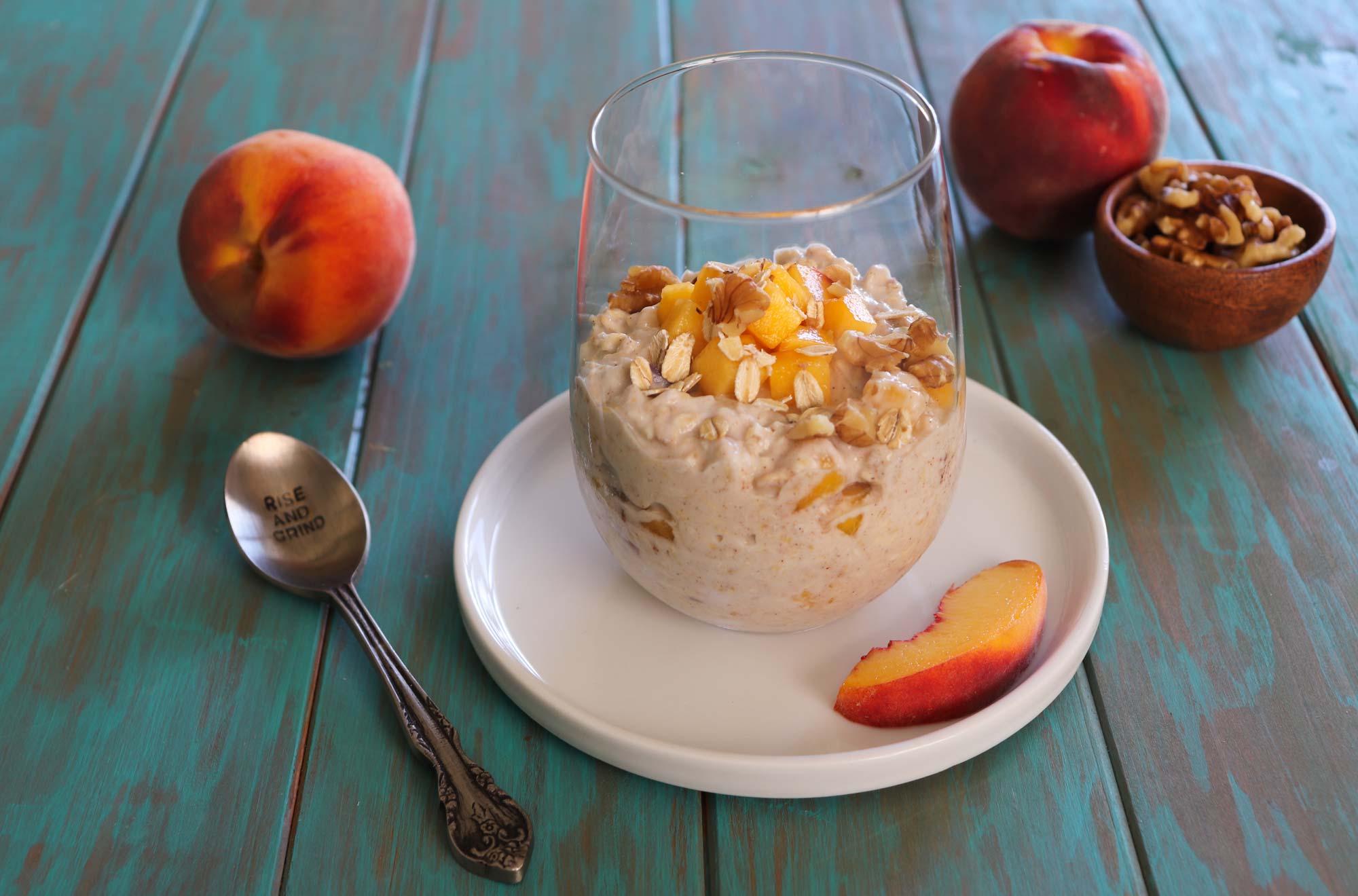
Plant-based milk combined with oats magically makes oatmeal while you get a good night’s rest. The addition of yogurt creates an extra special creaminess, giving this breakfast its name, Peaches & Cream. Enjoying yogurt as a part of your breakfast means powering up your belly with probiotic goodness, so you’re fueled and ready to start the day!
4. Creamy Lemon Dijon Dressing

In this recipe, yogurt transforms into a creamy dressing or sauce with a lovely hint of tanginess. Make and enjoy our Creamy Lemon Dijon Dressing recipe, and then have fun creating your own take on it by adding spices and herbs you love (or perhaps even grow in your own garden!). Having a probiotic-rich dressing on hand means you can get microbiota goodness every time you add it to salads, veggies, and bowls.
5. Vegan Onion Dip
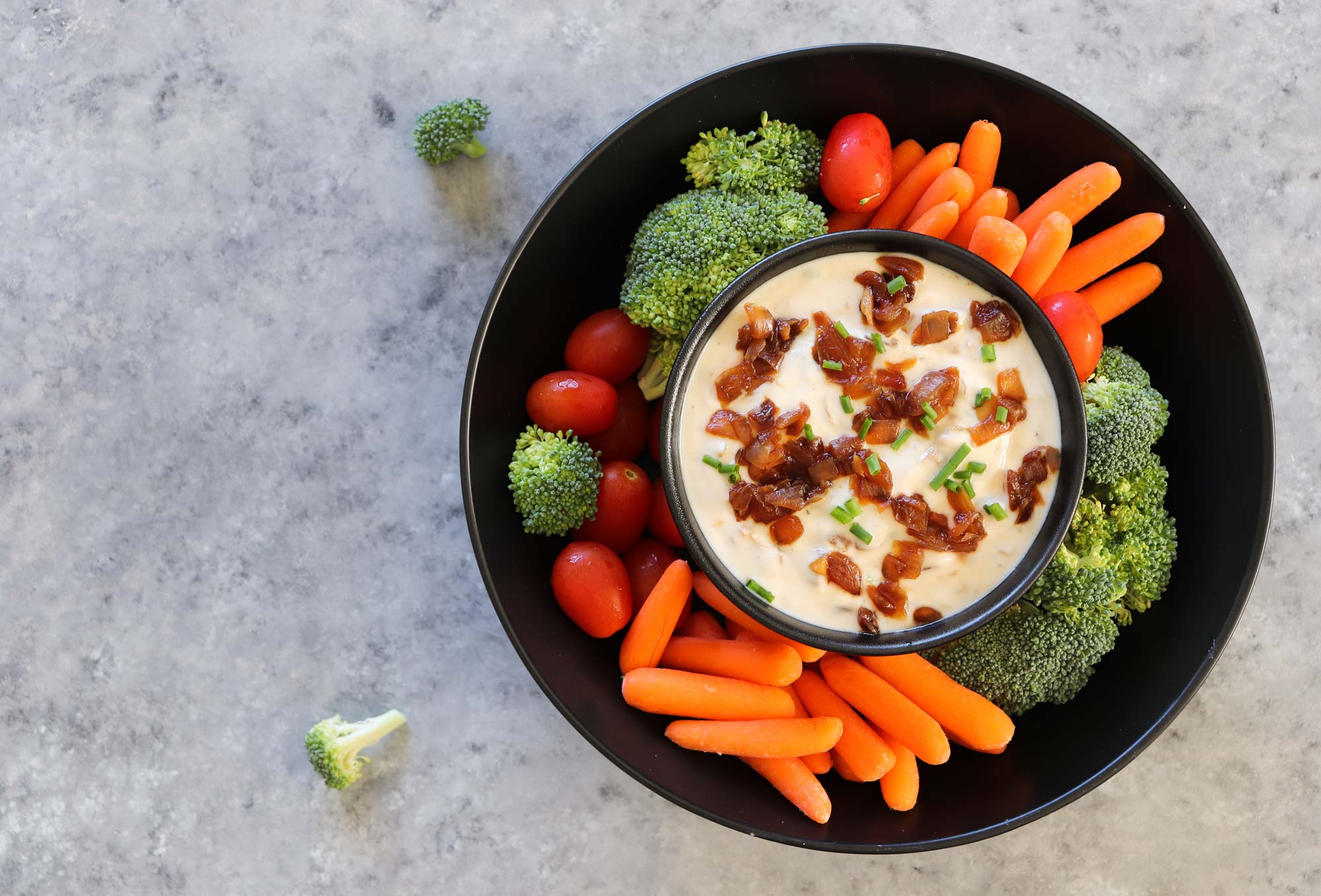
Plant-based yogurt takes the place of dairy-based sour cream to create a fun and appetizing dip that family and friends will love. Bring it to gatherings, or enjoy it at home all week long as a veggie dip, wrap filling, or grain bowl addition. By using plant-based yogurt in place of sour cream, you get superior nutrition without sacrificing flavor or texture. Plant-based yogurt is free from cholesterol and has less saturated fat (if any at all!). Plus, you’re adding tons of healing probiotics with each bite!
Get Cultured with Plant-Based Yogurt!

Yogurt is associated with significant health benefits — and it can be made with 100% plant-based ingredients. While many of these options are better alternatives overall compared to dairy yogurt, many commercial yogurts contain added sugar and other not-so-healthy ingredients, as well as being sold in single-use plastic containers. Fortunately, you can walk lighter on the earth, save money, and enjoy the benefits of delicious and nutritious yogurt, when you make your own. We hope you give some of the provided recipes a try, and enjoy a cultured helping of plant-based yogurt in your diet.







